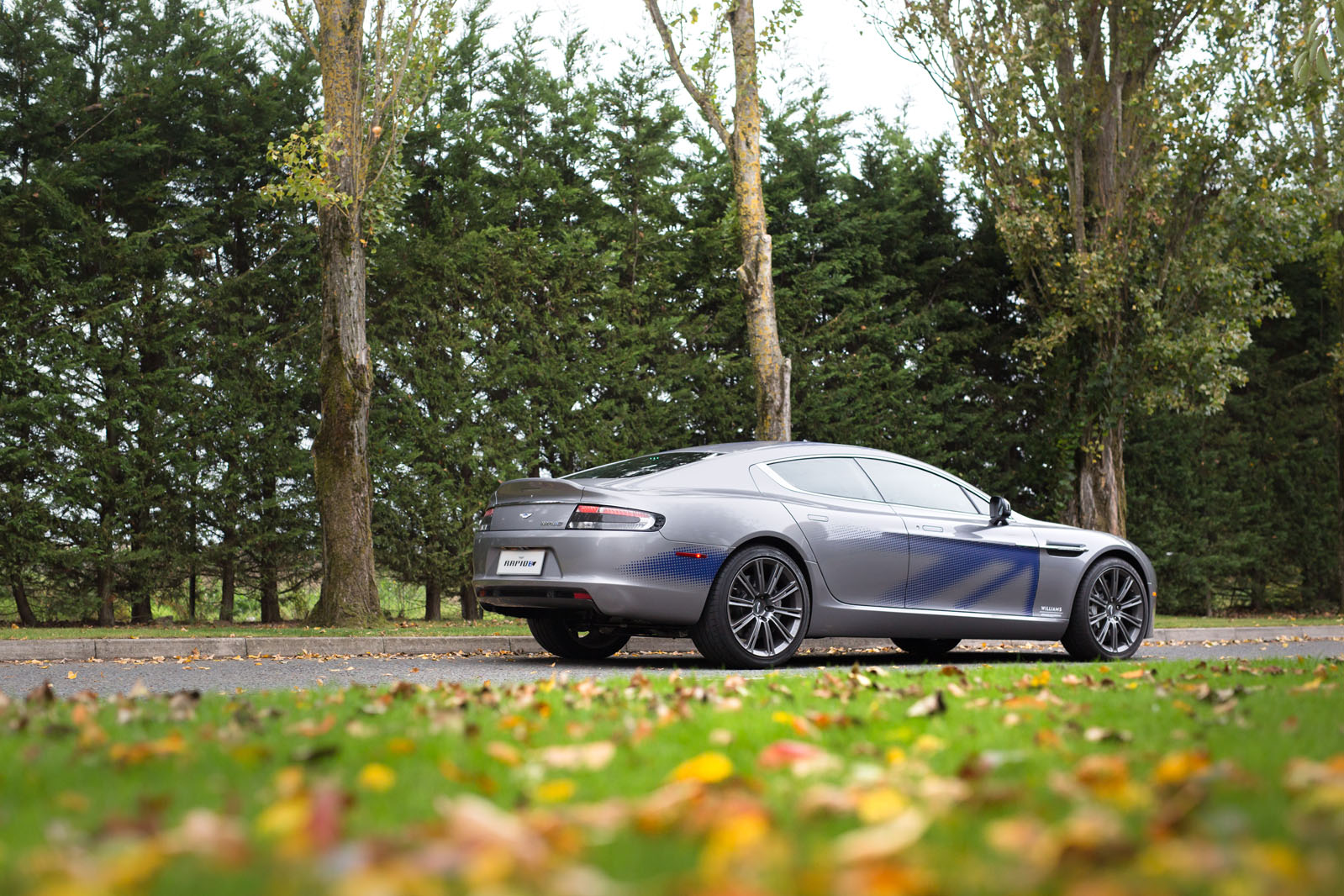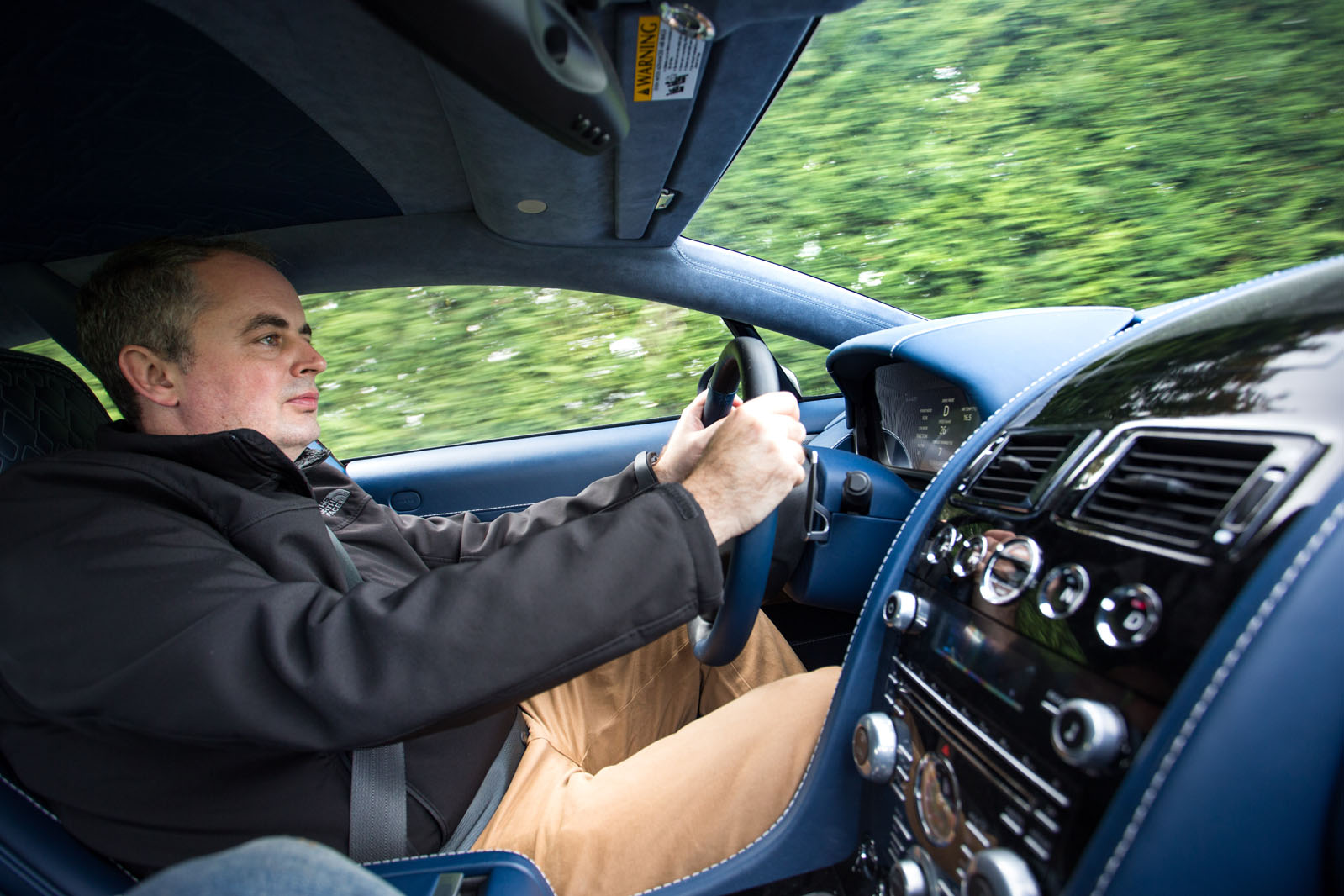Customers of Aston Martin's upcoming RapidE electric model will be very different to those interested in a top-of-the-line Tesla model, according to boss Andy Palmer.
"Most of the people who buy a Model S are buying it fully loaded. They're not limited by their cash; they're limited by the offer," Palmer said.
"We're looking to those guys looking for something above Tesla. That customer probably isn't looking for 'Ludicrous mode'. Our offer will have very credible acceleration – equal to a petrol Aston Martin – but you'll be able to drive the car rapidly all the way around the Nürburgring without it derating or conking out on you."
Aston Martin is currently running prototypes of the RapidE – one of which we drove (below) – ahead of deliveries in 2019. Although a fair amount is set to change before production of the 155 customer-spec RapidEs begins, the engineering mule does prove the fundamental viability of an electric Aston Martin.

The prototype has been developed by Williams Advanced Engineering, which is also working on the production version. It will be based on the Rapide AMR.
The car is described as a proof-of-concept rather than being too indicative of what the finished article will be like. As such, its engine bay is filled with what is in effect one of Williams' Formula E battery packs and has required some bulkhead surgery to make the pack fit. The final battery will be smaller and more compact, but still front-mounted. Drive is handled by the rear wheels only – in the prototype it is through a single electric motor but we're told that the finished article might well switch to a pair.
There are no performance claims beyond Aston Martin's stated target that the RapidE will be able to hit a 155mph top speed, thanks to a single-speed reduction gear – an impressive target if achieved.
The relationship between the RapidE and other future Aston Martin electric vehicles will be complicated. Palmer says that all EV powertrain intellectual property will reside with the company but admits that the RapidE is a proof-of-concept rather than an architecture that will be developed for other models.
When asked why Aston Martin was choosing to launch its newest powertrain in its oldest car, Palmer said: "I've engineered cars for a long time. It's very hard work when you try and change everything at once… I wanted to do this with a car we understand intrinsically."
Driving the Aston Martin RapidE prototype

Based on an original Rapide development mule, the electric prototype is closer to a concept car than the finished article. Windscreen wipers and indicators don't work – victims of the switch to a new electrical architecture – and the digital instrument screen reports a scrolling list of warnings and status messages alongside speed.
Even restricted to the edges of the Williams car park, it's clear that the prototype isn't going to humble a Model S in a drag race. Even a Nissan Leaf – one of Palmer's other projects – would probably have it beaten off the line because there is a noticeable delay between pressing the RapidE's accelerator pedal and feeling it start to move; apparently, this is down to the lack of traction control. Once the electrons are flowing, it feels strong, but testing is limited by the desire not to be shouted at. My 40mph peak speed is still well in excess of Williams' 15mph site limit.
Yet while some way off the finished article, the first RapidE does demonstrate that an electric Aston Martin can still deliver an appropriate sense of occasion. No surprise that it can't match the aural charm of the regular Rapide's V12 engine but, under hard use, the motor produces an electric whine that actually suits the car pretty well while delivering a reasonably forceful shove. Ride quality is still acceptable; the sizeable mass of the standard Rapide's 12-cylinder engine means the electric version will weigh about the same. If the engineering team can deliver on the target of proper high-speed ability and find the battery capacity to match it, then the production RapidE will be a very interesting car indeed.
More content:
Aston Martin DB11 demand ensures brand's first pre-tax profit since 2010